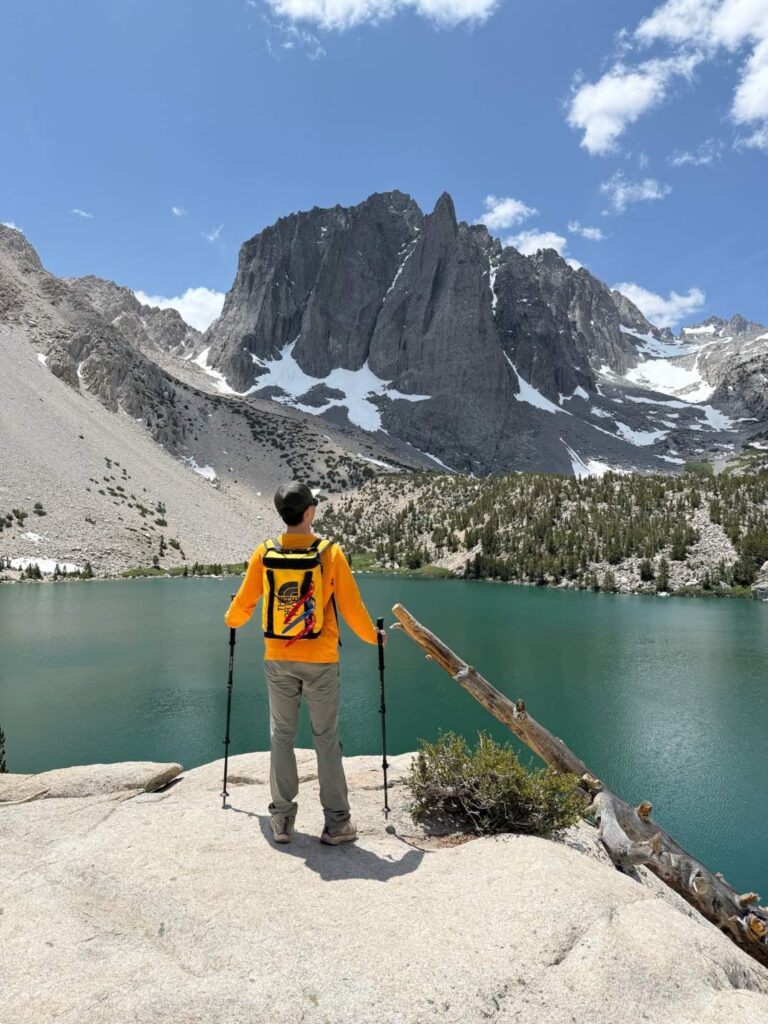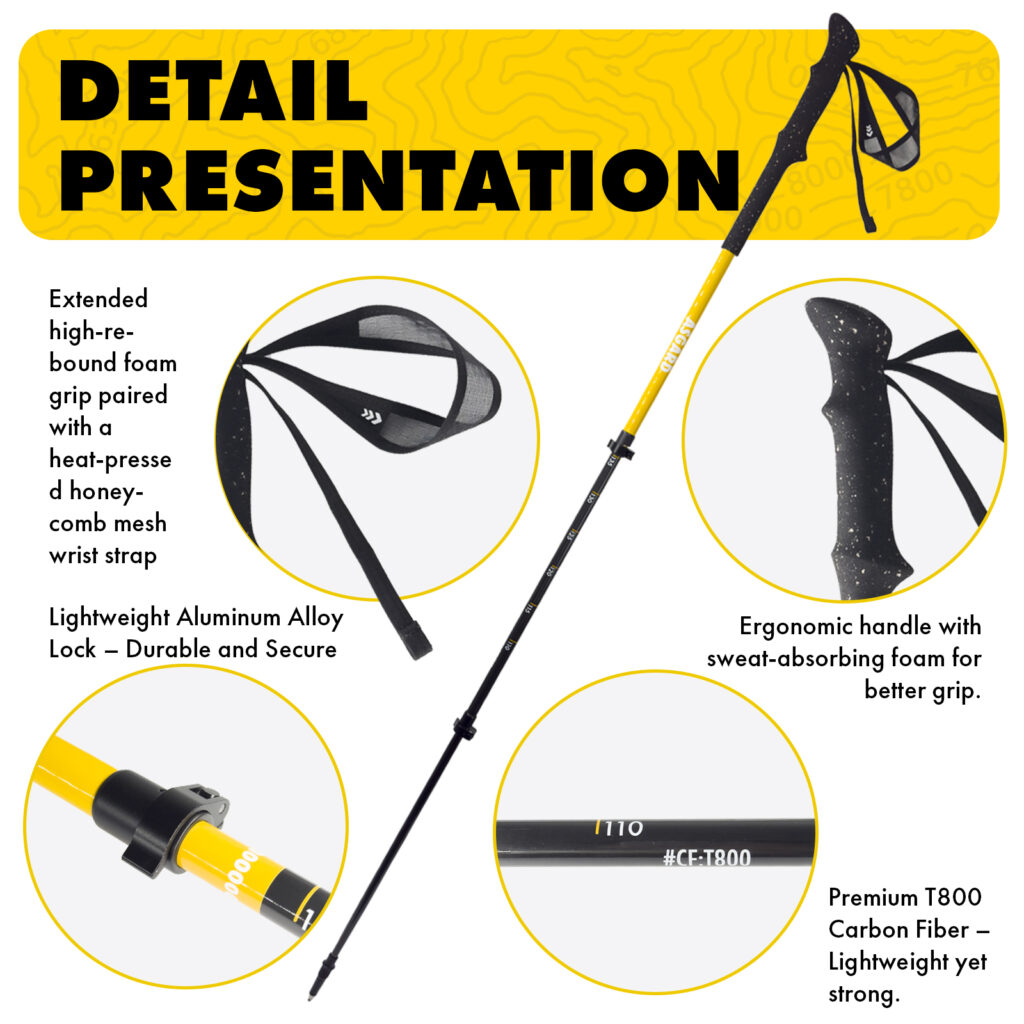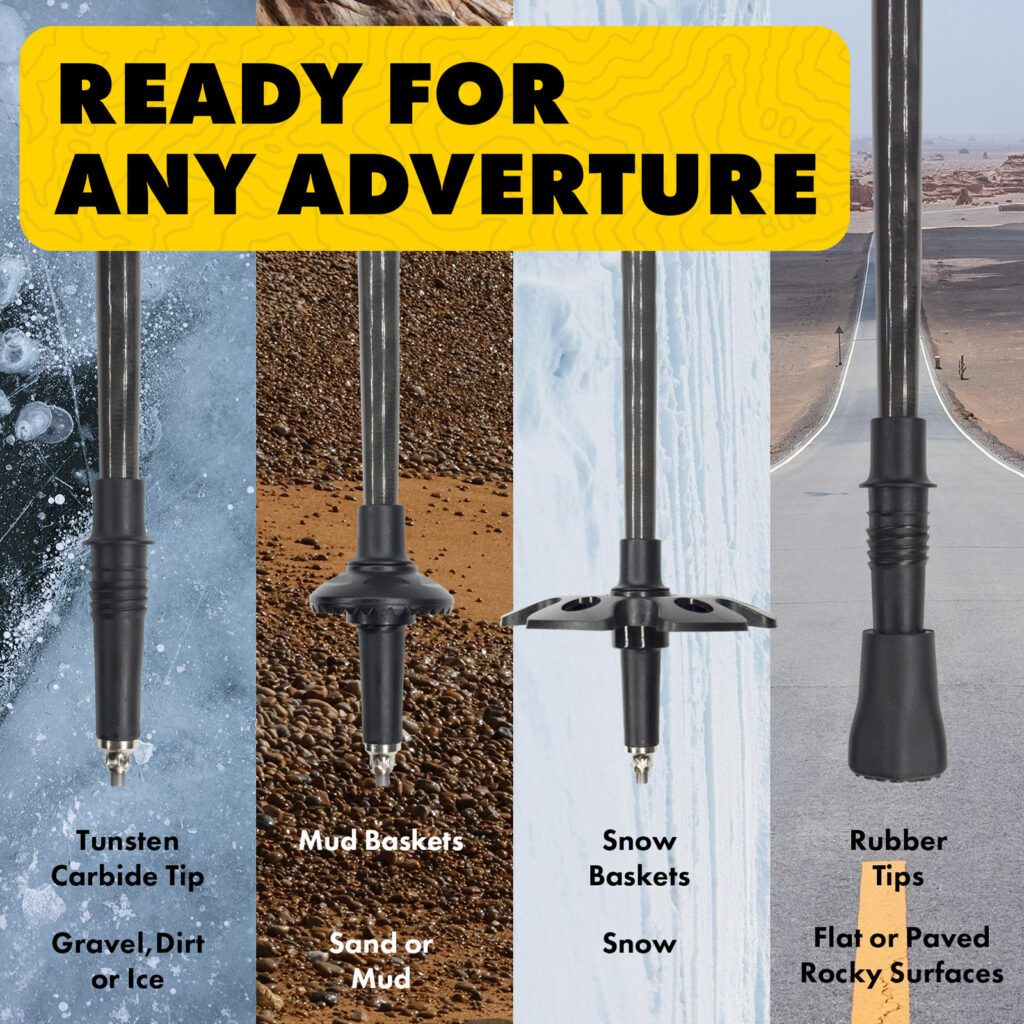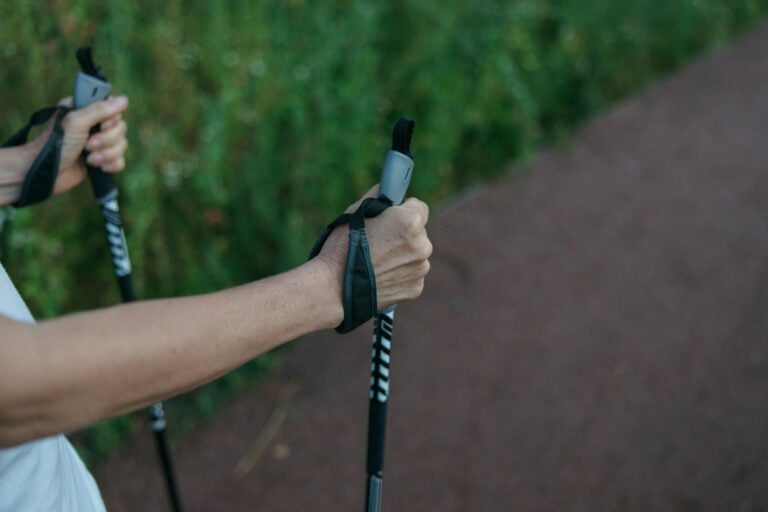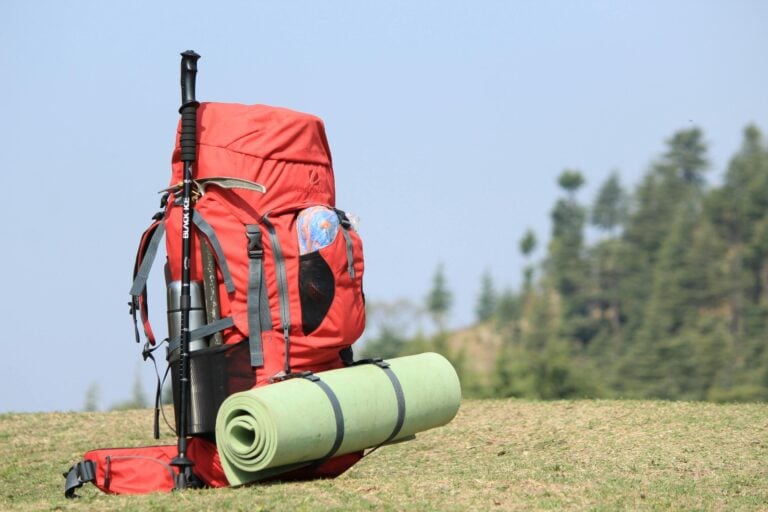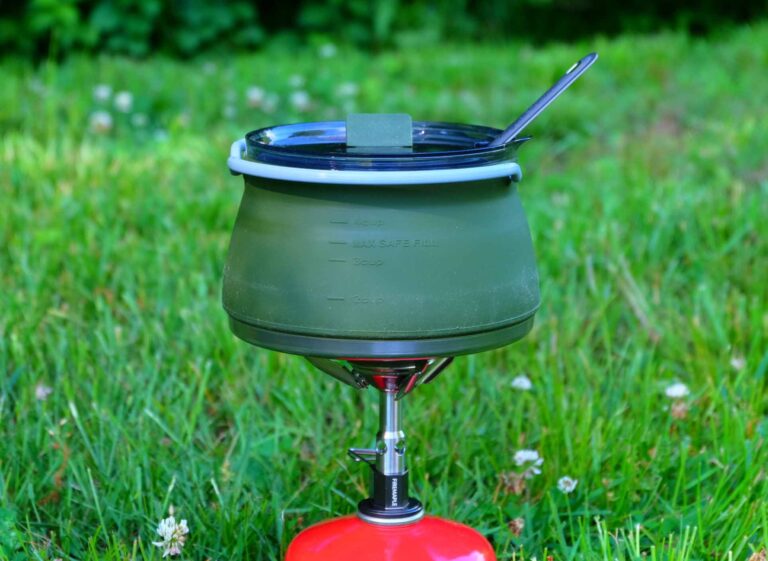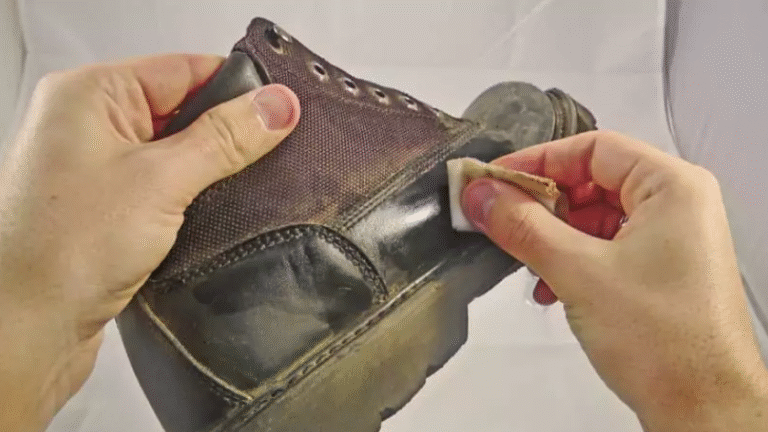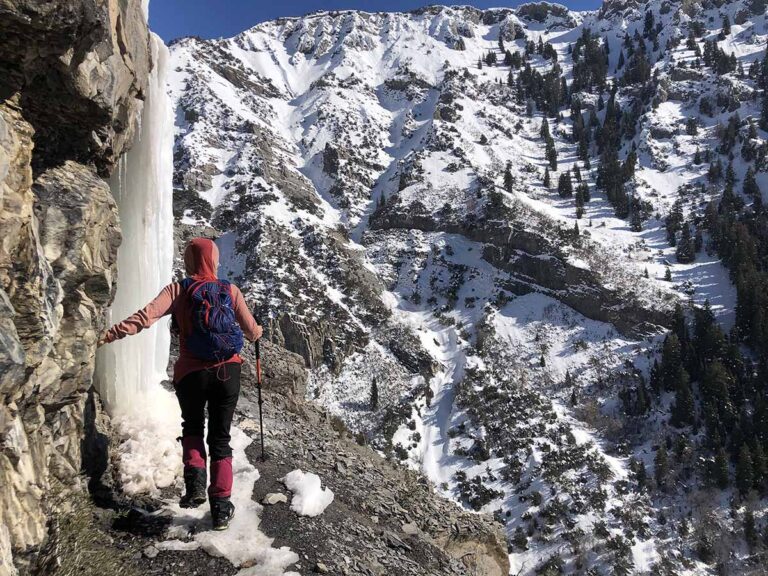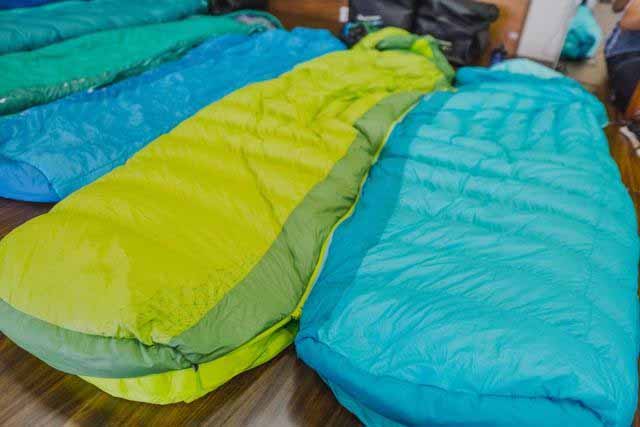Why You Need Hiking Poles
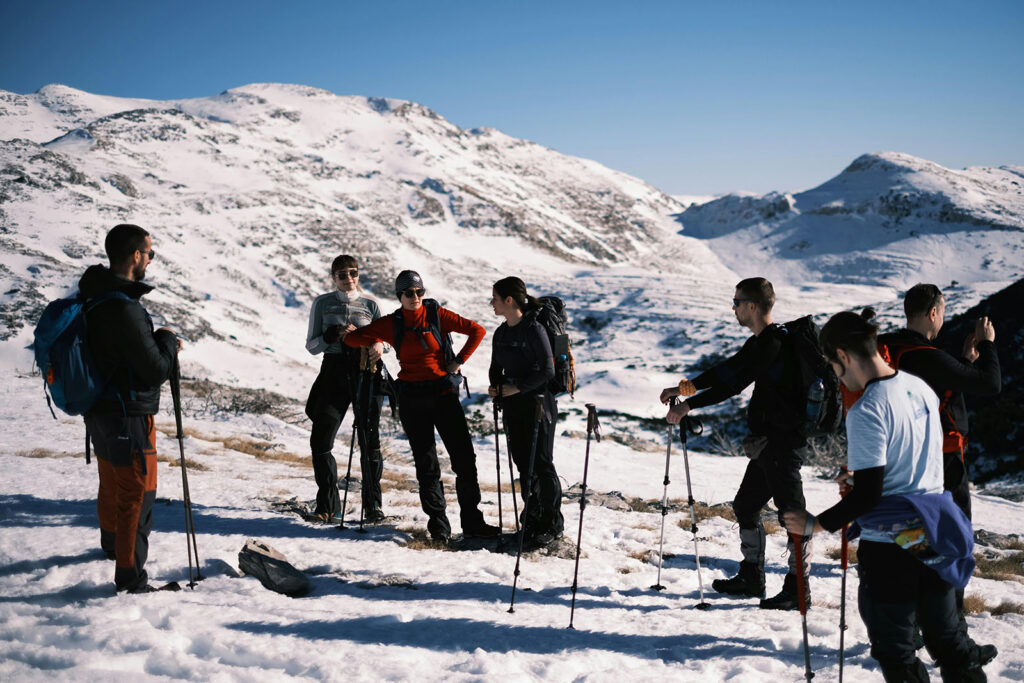
For mountaineering, hiking, and long-distance hikes, hiking poles are essential equipment for many outdoor lovers. They not only reduce stress on the knees and joints, but also improve balance on steep slopes and slippery terrain, help maintain strength, and reduce the risk of falls.
According to a study published in the Journal of Sports Sciences, hikers who use trekking poles experience an average of 20% less knee stress during long hikes. Therefore, choosing the right pair of trekking poles is crucial for enhancing your hiking experience and protecting your health.
Key Points for Choosing Hiking Poles
Material: Carbon Fiber vs Aluminum
Carbon fiber hiking poles are lightweight and offer excellent shock absorption, making them suitable for long-distance hikes and ultralight backpacking.
However, they offer a disadvantage: they are less impact-resistant and can break when struck by rocks or subjected to sharp bends.
Aluminum hiking poles are sturdy and durable, suitable for rugged terrain and heavy hiking. Although slightly heavier, they are more reliable in extreme conditions.
Tip: If you frequently do lightweight hiking, carbon fiber is best choice; but if you frequently use hiking poles in difficult mountain terrain or snowy conditions, aluminum is safer.
Grip and Handle
The grip of a trekking pole directly impacts hand comfort and long-term use:
- Cork Grip: Excellent sweat absorption, gradually molds to the shape of your hand, and is suitable for hot conditions.
- EVA Foam Grip: Soft, lightweight, and breathable, commonly used for long-distance hiking.
- Rubber Grip: Excellent insulation, suitable for snowy or cold weather, but can cause sweating in hot weather.
In addition, some hiking poles feature an extension grip, allowing for quick switching between grip positions when ascending or descending slopes, reducing the need for frequent pole length adjustments.
Length and Adjustment
The correct hiking pole length should ensure your elbows are bent at a near 90-degree angle when used.
Adjustable hiking poles are categorized as either telescopic or folding. Telescopic poles are suitable for different heights and terrains, while folding poles are lightweight and easy to store.
Fixed-length poles are lighter, have a simpler mechanical structure, and are less prone to damage, but lack flexibility.
Tip: Most outdoor lovers prefer adjustable poles for practicality, especially for hiking in a variety of terrains.
Locking System
The stability of hiking pole depends largely on its locking system:
- Flick Lock / Lever Lock: Secures with a snap, is sturdy and reliable, and allows for quick adjustment even with gloves.
- Twist Lock: Secures with a twist and is lightweight, but may slip in wet and slippery conditions.
- Push Button: Commonly used for folding poles, it allows for quick deployment and storage, but is more expensive.
Tip: For high-intensity hiking or heavy backpacking, consider using a flip lock.
Tips and Accessories
- Tungsten carbide/steel tips: Provide excellent grip on rock, ice, and snow.
- Rubber sleeves: Ideal for urban trails or indoor use, reducing noise and protecting the ground.
- Snow/mud trays: Prevent the pole from sinking too deeply into snow or mud.
In addition, some poles come with padded wrist straps to reduce hand strain during extended use.
Choosing Trekking Poles for Different Scenarios
Day Hiking
Lightweight, affordable, adjustable aluminum alloy trekking poles, such as the REI Co-op Trailbreak, are suitable.
Long-Distance Backpacking
Durable trekking poles with a reliable locking system, such as the Black Diamond Trail Pro Shock, are recommended.
Ultralight Hiking & Trail Running
Folding carbon fiber trekking poles, such as the Asgard Hydrogen Poles, are recommended for their lighter weight and quick packing.
Snow & Alpine Environments
Requires a snow tray, cold-weather grips, and high-strength materials, such as the Komperdell C3 Carbon Powerlock.
Budget and Brand Recommendations
Hiking poles typically cost between $30 and $200:
| Brand & Model | Material | Weight (per pole) | Fold/Adjust | Locking System | Best For | Price | Highlights |
|---|---|---|---|---|---|---|---|
| High End | |||||||
| Asgard Hydrogen Poles 2.0 | Carbon Fiber | ~5oz | Telescopic (3-segment) | High-strength Aluminum Lock | Ultralight backpacking, long thru-hikes, winter hikes, skiing | $179 | Ultralight, durability, multi-season performance |
| Komperdell C3 Carbon Powerlock | Carbon Fiber | ~8.1oz | Telescopic (3-segment) | Powerlock | Winter hikes, snow trekking | $170–190 | Cold-weather, durability |
| Leki Micro Vario Carbon | Carbon Fiber | ~8.5oz | External Locking Device | Push Button | Ultralight hiking, trail running | $190–205 | Ultralight, compact |
| Mid Range | |||||||
| Black Diamond Pursuit Trekking Poles | Aluminum | ~8.2oz | Telescopic | FlickLock Pro | Backpacking, trekking | $165–175 | Shock absorption, durable |
| Montem Ultra Strong | Aluminum | ~9.5oz | Telescopic | External Lock | Moderate hiking | $70–90 | Strong build, great value |
| Komperdell Ridgehiker Cork Powerlock | Aluminum | ~9.9oz | Telescopic | Powerlock | Daily hikes, mountain trails | $110–130 | Comfortable cork grip |
| Entry Level | |||||||
| Aluminum Quick Lock Trekking Poles | Aluminum | ~10.4oz | Telescopic | External Lock | General hiking | $25-35 | Much cheaper, Warranty-backed |
| TREKology Trek-Z V2.0 | Aluminum | ~9.7oz | Folding External | ExternalLock + Clip | Lightweight hiking | $40–60 | Compact, travel-ready |
| REI Co-op | Aluminum | ~10.4oz | Telescopic | Lock | Beginners, light hiking | $30–100 | Affordable, beginner-friendly |
Practical Tips

Adjust the appropriate length according to your height
- On flat ground, a 90-degree bend is most comfortable.
- Slightly shorten your arms when ascending to reduce pressure on your legs.
- Lengthen them slightly when descending to help maintain balance.
correct grip and swing rhythm
- The wrist should share the force through the wrist strap, not relying solely on your fingers.
- Alternate your swing with your feet as you walk: left foot – right pole, right foot – left pole.
- On rough terrain, place your force slightly in front of your body to ensure stability.
Use flexibly according to the terrain
- On flat ground: Use a single pole to conserve energy.
- On ascending: Alternate your poles for support and reduce pressure on your thighs.
- On descending: Place both poles forward to help absorb shock and protect your knees.
- On muddy or snowy terrain: The pole tips may sink; attach snow or mud supports if necessary.
Adapt the pole tip to the terrain
- Avoid excessive force on rocks, crevices, and wooden plank paths.
- When trekking on dirt or gravel roads, use the tip of your pole to provide additional support and prevent slipping.
- In protected areas or delicate grasslands, use rubber pole covers to minimize damage.
Distribute force appropriately and avoid over-reliance
- Trekking poles are for support, not complete dependence.
- When descending, use your poles to reduce the pressure on your knees, but don’t let your upper limbs completely replace your lower limbs.
- Remember not to swing your poles around when folding them to avoid injuring your companions.
Regular Maintenance and Inspection
- Check the buckle for security before departure to prevent slippage.
- After extended use, clean any dirt and dust from the pole joint.
- Avoid violent impacts on carbon fiber poles, and be careful to prevent bending with aluminum alloy poles.
Storage and Carrying Tips
- When not in use, shorten and stow folding or telescopic poles and strap them to the side pocket of your backpack.
- When mountaineering, rock climbing, or hiking through the jungle, fold your poles in advance to prevent them from snagging.
FAQs
Are hiking poles really necessary?
Yes. Trekking poles can reduce pressure on the knee joints, maintain balance, and improve walking efficiency, especially when hiking long distances, going downhill, or carrying heavy loads.
How many hiking poles should I buy?
Two poles are recommended. Two poles better distribute force and maintain stability. A single pole is only suitable for easy, short hikes.
Should I choose aluminum alloy or carbon fiber hiking poles?
Aluminum alloy is more durable and impact-resistant, making it suitable for beginners; carbon fiber is lightweight and shock-absorbing, making it suitable for long-distance or high-intensity hikers who prefer a lightweight design.
What is the appropriate length for hiking poles?
The appropriate length is about 90 degrees with the elbow bent on flat ground. You can shorten it for going uphill and lengthen it for going downhill.
What is the difference between telescopic and folding poles?
Telescopic poles offer flexible adjustment and better durability; folding poles are lightweight and pack down shorter, making them suitable for backpacking.
Do I need to add snow or mud holders to my hiking poles?
Yes. Snow grips are suitable for snow and sand, while mud grips are suitable for soft mud and prevent the pole tip from sinking.
How do I use the wrist strap for hiking poles?
Thread your hand through the wrist strap from the bottom up, then grip the handle. This way, the force is distributed by the wrist, rather than relying solely on the fingers.
Can I take hiking poles on an airplane?
They are generally not allowed in carry-on luggage, but can be checked in. Foldable poles are more convenient for checked luggage.
How often should hiking poles be replaced?
It depends on frequency of use and material. Carbon fiber poles should be replaced immediately if they have cracks, and aluminum alloy poles should also be replaced if they are bent and affect support.
Can hiking poles be used for skiing or trail running?
Ski poles are generally more specialized, but lightweight hiking poles can also be used for snowshoeing and trail running.
In Summary
Choosing hiking poles isn’t a “one-size-fits-all” approach; it requires a comprehensive consideration of your height, hiking habits, terrain, and budget.
If you’re looking for lightweight, opt for a folding carbon fiber pole.
If you’re heavily loaded or frequently use them in challenging terrain, an aluminum alloy with an external lock is more reliable.
If you’re looking for value, an entry-level aluminum alloy hiking pole will meet most needs.
A suitable pair of hiking poles will help you conserve energy, protect your joints, and make hiking safer and more efficient during your outdoor adventures.
